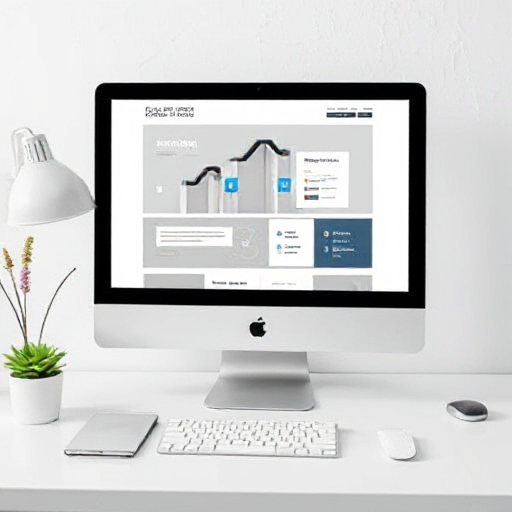Using Analytics To Improve Your Blog Content
Analytics are a powerful tool for bloggers looking to enhance the quality, relevance, and reach of their content. By systematically analyzing data, you can gain valuable insights into your audience’s preferences, behavior, and engagement patterns. This guide provides a detailed overview of how to use analytics to improve your blog content.
1. Understanding Blog Analytics
Definition:
Blog analytics involves the collection, measurement, and analysis of data related to your blog’s performance. This data helps you understand how your content is performing and how visitors interact with your blog.
Key Metrics:
- Page Views: The total number of times a page has been viewed.
- Unique Visitors: The number of distinct individuals visiting your blog.
- Bounce Rate: The percentage of visitors who leave your site after viewing only one page.
- Average Session Duration: The average amount of time a visitor spends on your site during a single visit.
- Traffic Sources: The origins of your blog’s traffic, such as search engines, social media, or referral sites.
- Conversion Rate: The percentage of visitors who complete a desired action, such as subscribing to a newsletter or making a purchase.
2. Setting Up Analytics Tools
Google Analytics:
- Account Setup: Create a Google Analytics account and add your blog as a property.
- Tracking Code Install the Google Analytics tracking code on your blog to start collecting data
- Goals and Events: Set up goals to track specific actions like form submissions or downloads, and use events to track interactions like button clicks.
Additional Tools:
- Google Search Console: Provides insights into your search traffic and helps you identify and fix issues affecting your search performance.
- Heatmap Tools: Tools like Hotjar or Crazy Egg show where users click and how they scroll through your pages, providing visual insights into user behavior.
3. Analyzing Audience Behavior
Demographics and Interests:
- Age and Gender: Understand the age and gender distribution of your audience to tailor your content accordingly.
- Interests: Identify the interests and affinities of your audience to create content that resonates with their preferences.
Behavior Flow:
- User Journey: Use the Behavior Flow report in Google Analytics to see how visitors navigate through your site. Identify common paths and drop-off points.
- Popular Content: Determine which pages are most visited and analyze what makes them appealing.
Engagement Metrics:
- Time on Page: Identify which posts keep readers engaged for longer periods.
- Scroll Depth: Use heatmap tools to see how far visitors scroll on your pages. Adjust your content layout to ensure important information is seen.
4. Improving Content Based on Analytics
Identifying High-Performing Content:
- Content Audit: Regularly audit your content to identify high-performing posts. Analyze the characteristics of successful posts, such as topics, length, and format.
- Replicate Success: Create more content around popular topics or in similar formats that resonate with your audience.
Enhancing Low-Performing Content
- Bounce Rate Analysis: Identify pages with high bounce rates. Assess whether the content is relevant, engaging, and provides value.
- Content Refresh: Update outdated posts with new information, images, or improved readability to make them more appealing.
Optimizing for SEO:
- Keyword Performance: Use Google Search Console to identify which keywords bring traffic to your blog. Optimize your content for these keywords to improve search rankings.
- Meta Descriptions and Titles: Ensure your meta descriptions and titles are compelling and include relevant keywords to increase click-through rates from search results.
Improving User Experience:
- Mobile Optimization: Ensure your blog is mobile-friendly, as a significant portion of traffic often comes from mobile devices.
- Page Speed: Use tools like Google PageSpeed Insights to analyze and improve your blog’s loading time, reducing bounce rates and enhancing user experience.
5. Creating a Data-Driven Content Strategy
Setting Goals:
- SMART Goals: Define Specific, Measurable, Achievable, Relevant, and Time-bound goals for your blog. For example, increase unique visitors by 20% in the next three months.
- Key Performance Indicators (KPIs) : Identify KPIs that align with your goals, such as increased page views, longer session durations, or higher conversion rates.
Content Planning:
- Content Calendar: Develop a content calendar based on your analytics insights, scheduling posts around topics and formats that perform well.
- Audience Feedback: Use comments, social media interactions, and direct feedback to refine your content strategy and address your audience’s needs.
Testing and Iteration:
- A/B Testing: Experiment with different headlines, images, and calls-to-action to see what resonates best with your audience.
- Continuous Improvement: Regularly review your analytics data to identify trends and make iterative improvements to your content strategy.
6. Leveraging Analytics for Content Promotion
Social Media Insights:
- Platform Performance: Use social media analytics to determine which platforms drive the most traffic to your blog.
- Optimal Posting Times: Identify the best times to post on social media for maximum engagement and reach.
Email Marketing:
- Subscriber Behavior: Analyze email open rates, click-through rates, and conversion rates to refine your email marketing strategy.
- Personalization: Use insights from your analytics to segment your email list and send personalized content that addresses specific audience interests.
Collaboration Opportunities:
- Guest Blogging: Identify popular posts and collaborate with influencers or industry experts to create guest posts that can drive additional traffic.
- Backlink Opportunities: Use analytics to find high-performing content and reach out to other bloggers or websites for backlink opportunities, enhancing your blog’s SEO.
Using analytics to improve your blog content is an ongoing process that requires regular attention and adaptation. By understanding key metrics, analyzing audience behavior, and making data-driven decisions, you can create more engaging and relevant content that meets your audience’s needs. Implement these strategies to leverage the power of analytics and take your blog to the next level.
For more information, email admin@1dollarcreatives.com







